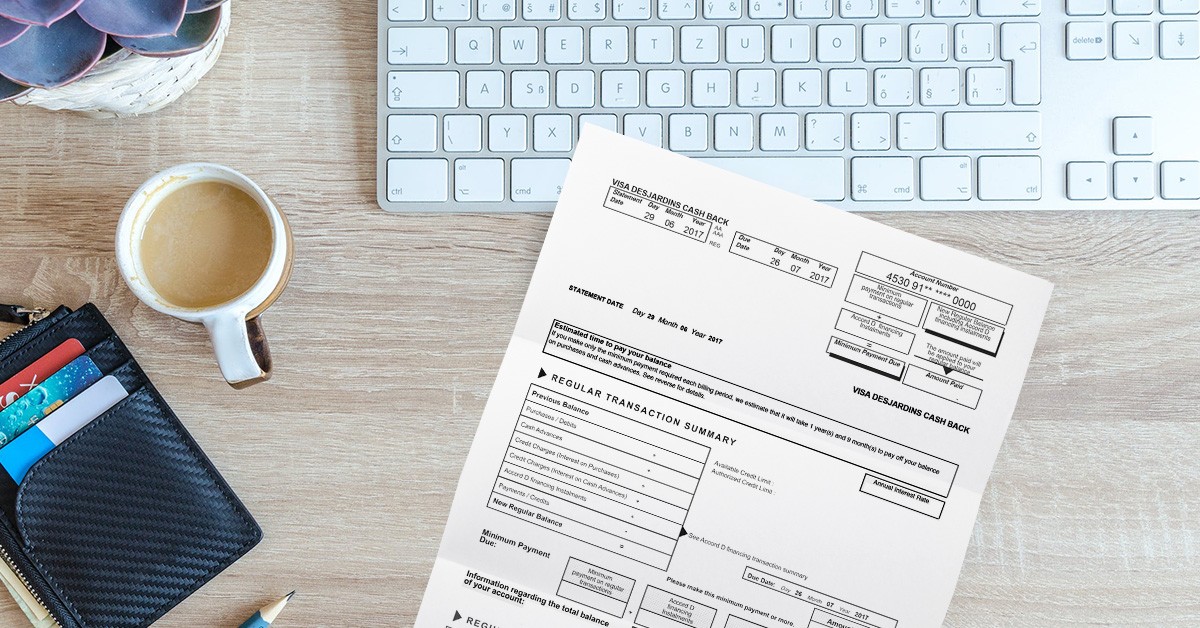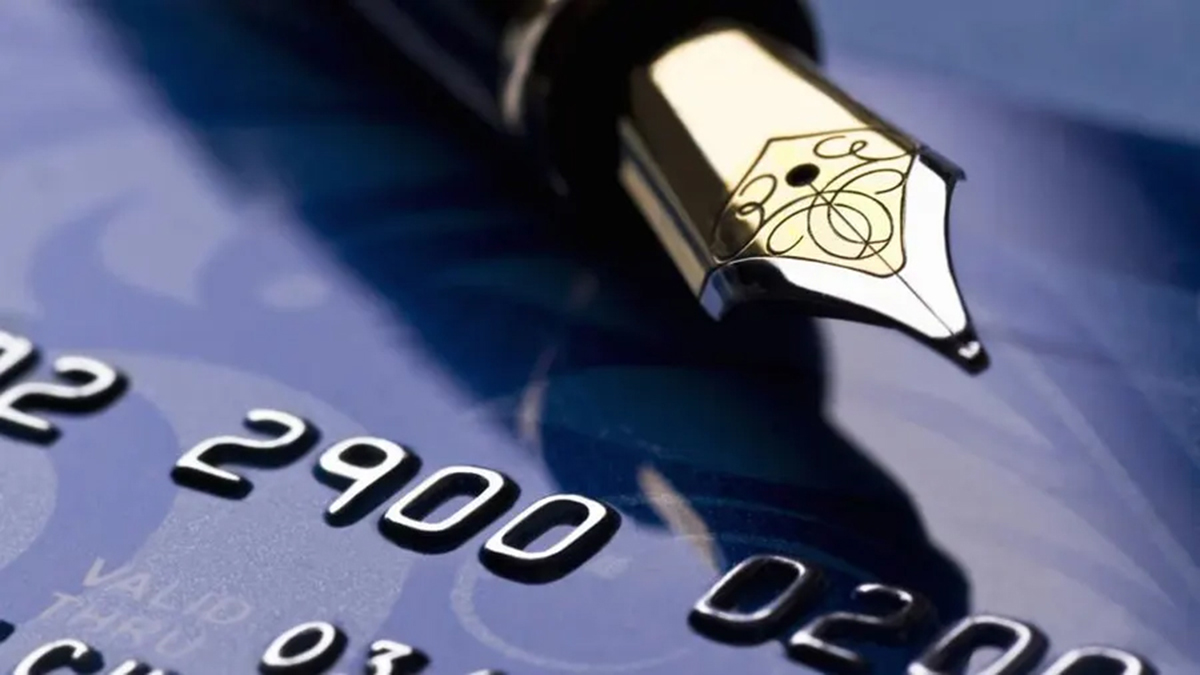

Finance
What Is 30% Of A $3000 Credit Limit
Modified: March 6, 2024
Learn how to calculate 30% of a $3000 credit limit and its impact on your finances. Understand the significance of credit limits in managing your finances effectively.
(Many of the links in this article redirect to a specific reviewed product. Your purchase of these products through affiliate links helps to generate commission for LiveWell, at no extra cost. Learn more)
Table of Contents
Introduction
Understanding the concept of credit limits and their significance is crucial for managing personal finances effectively. When it comes to credit cards, the credit limit is the maximum amount a cardholder can borrow. It plays a pivotal role in determining one's purchasing power and overall creditworthiness. In this article, we will delve into the specifics of credit limits, particularly focusing on the significance of 30% of a $3000 credit limit. By comprehensively exploring this topic, readers will gain valuable insights into the impact of credit utilization on their financial well-being.
Credit limits are established by financial institutions based on various factors, including an individual's credit history, income, and overall financial health. These limits serve as a safeguard, preventing cardholders from accumulating excessive debt and protecting lenders from potential defaults. Moreover, credit limits are indicative of the trust that financial institutions place in their customers, reflecting their confidence in the ability of cardholders to manage credit responsibly.
Understanding the dynamics of credit limits is essential for making informed financial decisions. By examining the implications of 30% of a $3000 credit limit, individuals can gain a deeper understanding of the optimal utilization of available credit. This knowledge empowers consumers to leverage their credit responsibly, thereby enhancing their financial stability and credit scores.
Throughout this article, we will explore the significance of credit utilization and provide valuable tips for effectively managing credit limits. By shedding light on these crucial aspects of personal finance, readers will be equipped with the knowledge needed to navigate the realm of credit limits with confidence and prudence.
Understanding Credit Limits
Credit limits represent the maximum amount that individuals can borrow using their credit cards. These limits are determined by financial institutions and are based on an individual’s credit history, income, and other relevant financial factors. When a credit card is issued, the assigned credit limit serves as a cap on the amount of funds that can be borrowed. It is important to note that credit limits are not arbitrary figures; rather, they are meticulously calculated to mitigate the risk of default while providing cardholders with a reasonable borrowing capacity.
Financial institutions assess an individual’s creditworthiness to establish an appropriate credit limit. Factors such as credit score, income, existing debt, and payment history are meticulously evaluated to determine the level of risk associated with extending credit. A higher credit limit signifies that the cardholder has demonstrated responsible financial behavior and possesses the capacity to manage larger credit lines. Conversely, a lower credit limit may be assigned to individuals with limited credit history or a higher perceived risk of default.
It is important to understand that credit limits are not static and can be adjusted over time based on the cardholder’s financial behavior and changes in their credit profile. Responsible credit usage, timely payments, and an improved credit score can potentially lead to an increase in the assigned credit limit, thereby expanding the individual’s borrowing capacity.
Furthermore, credit limits play a pivotal role in shaping an individual’s credit utilization ratio, which is a key factor in determining credit scores. This ratio represents the percentage of available credit that is being utilized. Understanding the relationship between credit limits and utilization is essential for maintaining a healthy credit profile and optimizing one’s financial standing.
By comprehending the intricacies of credit limits, individuals can make informed decisions regarding their credit usage, thereby safeguarding their financial well-being and fostering a positive credit history. This foundational understanding sets the stage for effectively managing credit limits and utilizing available credit responsibly.
Calculating 30% of a $3000 Credit Limit
Understanding how to calculate 30% of a $3000 credit limit is essential for managing credit utilization effectively. Credit utilization refers to the percentage of available credit that is being utilized. This metric holds significant weight in determining an individual’s creditworthiness and can impact their credit score. To calculate 30% of a $3000 credit limit, one simply multiplies the credit limit by 0.30 (which represents 30% in decimal form). In this case, the calculation would be: $3000 x 0.30 = $900.
This calculation reveals that 30% of a $3000 credit limit amounts to $900. This figure represents the optimal threshold for credit utilization, as it aligns with the recommended utilization rate for maintaining a healthy credit profile. By keeping the outstanding balance below $900 on a $3000 credit limit, individuals can demonstrate responsible credit management and positively impact their credit scores.
It is important to note that while the 30% threshold is often cited as an ideal utilization rate, it is not a rigid rule. Credit scoring models consider various utilization thresholds, and maintaining a utilization rate below 30% is generally advisable. However, striving for even lower utilization rates, such as 10% to 20%, can further enhance one’s credit standing.
By understanding the significance of 30% of a $3000 credit limit and the corresponding calculation, individuals can proactively manage their credit utilization to optimize their credit scores and overall financial well-being. This knowledge empowers individuals to make informed decisions regarding their credit usage, thereby fostering a positive credit history and enhancing their financial stability.
Importance of Credit Utilization
Credit utilization plays a pivotal role in shaping an individual’s credit profile and is a key factor considered by credit scoring models. This metric reflects the percentage of available credit that is being utilized, providing insights into an individual’s borrowing behavior and financial management. Maintaining an optimal credit utilization rate is crucial for preserving a positive credit history and maximizing credit scores.
High credit utilization, wherein a significant portion of the available credit is utilized, can raise red flags to lenders and credit scoring algorithms. It may indicate financial strain or a heightened risk of default, potentially leading to a negative impact on credit scores. On the other hand, low credit utilization demonstrates responsible credit management and financial prudence, signaling to lenders that the individual is effectively managing their available credit.
Understanding the impact of credit utilization on credit scores is imperative for individuals seeking to bolster their financial standing. By keeping credit utilization within recommended thresholds, such as the widely cited 30% guideline, individuals can position themselves favorably in the eyes of lenders and credit bureaus. Moreover, maintaining low credit utilization can open doors to favorable interest rates, better loan terms, and increased access to credit in the future.
It is important to note that credit utilization is a dynamic metric that can fluctuate based on individual spending and payment patterns. Regularly monitoring and managing credit utilization is essential for preserving a healthy credit profile. By strategically managing credit utilization, individuals can harness the power of this metric to enhance their financial well-being and pave the way for future financial opportunities.
Ultimately, recognizing the importance of credit utilization empowers individuals to take proactive steps in optimizing their credit scores and securing a solid financial foundation. By aligning credit utilization with recommended guidelines and exercising prudence in credit management, individuals can harness the potential of this metric to achieve their financial goals and aspirations.
Tips for Managing Credit Utilization
Effectively managing credit utilization is essential for maintaining a healthy credit profile and optimizing credit scores. By implementing strategic practices and exercising financial prudence, individuals can navigate credit utilization with confidence and maximize its positive impact on their financial well-being. Here are some valuable tips for managing credit utilization:
- Monitor Credit Balances Regularly: Keeping a close eye on credit card balances is crucial for managing credit utilization. Regular monitoring allows individuals to track their credit usage and make timely adjustments to stay within optimal utilization thresholds.
- Strive for Low Utilization Rates: Aim to keep credit utilization well below the recommended threshold of 30%. Maintaining lower utilization rates, such as 10% to 20%, can further bolster credit scores and demonstrate responsible credit management.
- Consider Increasing Credit Limits: Requesting a credit limit increase from credit card issuers can effectively lower credit utilization, provided that the spending patterns remain consistent. However, this approach requires disciplined financial management to avoid accruing excessive debt.
- Use Multiple Credit Cards Wisely: Distributing expenses across multiple credit cards can help manage credit utilization across individual accounts. This approach can prevent any single card from reaching high utilization levels, thereby preserving overall credit health.
- Pay Balances Multiple Times a Month: Making multiple payments throughout the billing cycle can help maintain lower reported balances, effectively managing credit utilization. This proactive approach demonstrates prudent credit management and can positively impact credit scores.
- Avoid Closing Unused Credit Accounts: Closing unused credit accounts can reduce the total available credit, potentially leading to higher credit utilization. Keeping these accounts open, especially if they have favorable terms, contributes to a lower overall utilization rate.
- Strategically Plan Large Purchases: When considering significant expenses, such as major purchases or travel, individuals should factor in the potential impact on credit utilization. Planning such expenditures strategically can help mitigate spikes in credit utilization.
By implementing these tips and integrating prudent credit management practices into their financial routines, individuals can effectively manage credit utilization, optimize their credit scores, and fortify their financial well-being. Proactive credit utilization management lays the groundwork for achieving long-term financial stability and unlocking future opportunities for financial growth and prosperity.
Conclusion
In conclusion, comprehending the dynamics of credit limits and credit utilization is paramount for individuals striving to maintain a healthy financial standing and optimize their credit scores. The significance of 30% of a $3000 credit limit lies in its representation of the recommended utilization threshold, offering a benchmark for responsible credit management. By understanding the implications of credit utilization and the impact it has on credit scores, individuals can proactively navigate their credit limits with prudence and foresight.
Managing credit utilization effectively involves strategic practices such as monitoring credit balances, striving for low utilization rates, and leveraging multiple credit cards wisely. By implementing these tips and exercising financial discipline, individuals can harness the potential of credit utilization to bolster their credit profiles and pave the way for favorable financial opportunities.
Ultimately, the knowledge and proactive management of credit utilization empower individuals to shape their financial futures with confidence. By aligning credit utilization with recommended guidelines and integrating prudent credit management practices into their financial routines, individuals can cultivate a positive credit history, enhance their creditworthiness, and position themselves for long-term financial success.
By embracing the insights shared in this article and applying them to their financial endeavors, readers can embark on a journey toward financial empowerment, leveraging credit utilization as a tool for achieving their aspirations and securing a solid foundation for their financial well-being.














